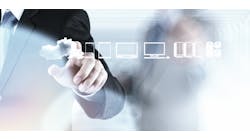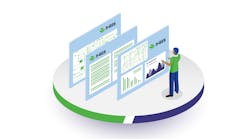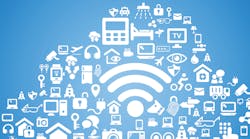Standardization Is the Key:
The Internet of Things (IoT) is now in sharp focus for the technology industry. Two major trends have made Internet connectivity progress from a network of desktop users to a network of things: the unprecedented expansion of mobile connectivity, anywhere and anytime; and the availability of a myriad of connected, low-power sensors and devices. Tiny sensors, industrial machines, cars, buildings, animals, and even human body parts, are all part of the IoT.
Efforts so far have focused predominantly on developing connectivity frameworks (communication architectures and protocols ranging from physical layers to semantic interoperability) and improving sensors to make them smaller, rugged, inexpensive, and consume less energy.
Making the IoT effective, however, requires more than sensing and communication capabilities. Recent evolutions in artificial intelligence and machine learning are bringing a missing piece to the IoT puzzle, by providing useful and actionable information to manufacturers and users.
Boom Time
Several research organizations have attempted to define significant market opportunities for the IoT. While estimated size and volumes may vary, all concur on the point that the effects on markets are projected to be huge: by 2020 there will be 50 billion connected objects representing a USD 19 trillion opportunity according to Cisco (http://www.cisco.com/); there will be 12 billion machine-to-machine connections according to Machina Research ((https://machinaresearch.com); while Gartner believes that more than half of new business processes and systems will incorporate some IoT elements (http://www.gartner.com/).
Rather than leading to abrupt disruptions in existing businesses and processes, the IoT is developing in a continuous and steady way, affecting a broad number of technology sectors. These range from automated homes and buildings, medical wearables, to intelligent transportation and industrial manufacturing.
Although forecasters and investors have tried hard to identify killer apps, market outlooks remain difficult to converge given the broad variety of opinions. Several market observers1 even note that this lack remains a significant hurdle for rapid market development.
A recent survey conducted by the World Economic Forum (WEF, https://www.weforum.org/) provides an insightful perspective into which applications could help drive the IoT to maturity. In this study, 800 leaders were polled on 21 tipping points (i.e., moments when specific technological shifts hit mainstream society) expected to be enabled by 2025.2 It reveals that by that date:
• 91% believe that 10% of people will wear clothes connected to the Internet.
• 89% believe that 1 trillion sensors will be connected to the Internet.
• 85% believe that 10% of reading glasses will be connected to the Internet.
• 70% believe that over 50% of Internet traffic to homes will go to appliances and devices.
A large number of the executives surveyed believe the IoT will be driven by myriads of connected sensors, home appliances and wearable devices. Several IEC technical committees are working on these topics, including for household appliances and for wearable smart devices.3
Standardization Must Come First
IEC and the International Organization for Standardization (ISO) Joint Technical Committee on Information Technology (ISO/IEC JTC 1)4 defines the IoT as: An infrastructure of interconnected objects, people, systems and information resources together with intelligent services to allow them to process information of the physical and the virtual world and react.
The IoT is still delivering behind initial expectations. One reason for this is the absence of widely adopted international standards. As observed by Forrester in one of their TechRadar reports5, "IoT technologies are diverse and immature," many of them being timid evolutions of legacy or proprietary technologies. They add: "Standards are nascent, as vendors are only a couple of years into the process of creating general-purpose interoperability standards. And IoT security technologies are still in the creation phase, with no established products."
While International Standards are no substitute for a dynamic, innovative and competitive marketplace, they can support the IoT marketplace in several different ways, such as:
• Reducing fragmentation among numerous consortia, fora, local or regional initiatives, all with the same objectives but with different and often incompatible technologies, can help mitigate the risk of investing in technologies that may quickly be displaced by more open, widely accepted ones.
• Interoperability between devices and brands is not only an enabler for developing attractive product ecosystems for end users, but also a driver for manufacturers to scale up their product offerings thanks to more cost-effective sourcing of largely adopted, off-the-shelf technologies. Interoperability is fostered at various levels, from shared semantics frameworks to common reference architectures, using a well-defined terminology that is understood by all market parties.
• Handling and making sense of data, developing robust IoT security mechanisms, and effectively addressing privacy issues, require the involvement of a wide set of stakeholders to develop adequate technical solutions that address societal concerns and respond to policy needs.
The international standardization system is the place where these issues can be discussed and agreed upon in a neutral and consensus-based manner.
IoT Standardization Ramps Up
Even before IoT became a widely known and used term, ISO/IEC JTC 1 and its subcommittees, were developing International Standards which have addressed several parts of the overall IoT landscape, such as: communication protocols, systems engineering, interconnection equipment, IT security, Cloud computing and distributed platforms, and Big Data.
More recently, a subcommittee for IoT and related technologies6 was set up to regroup existing ISO/IEC JTC 1 standardization activities in this area, using a systems integration approach. Its work will comprise sensor networks and IoT, and it will develop new International Standards, which aim to provide the missing pieces of the IoT puzzle.
These work-in-progress Standards include defining a common IoT vocabulary (ISO/IEC 20924), specifying an IoT Reference Architecture (ISO/IEC 30141), as well as devising an interoperability framework to support seamless communication between various IoT entities (ISO/IEC 21823). A report on IoT use cases (ISO/IEC TR 22417) will also be published to inform the marketplace on existing IoT success stories and emerging deployments.
Many more activities are under way and planned within the newly created IoT subcommittee, with the ultimate goal of providing the marketplace with a consistent, relevant, and future-proof set of IoT Standards that will facilitate the advent of the "all connected things" paradigm. Cooperation with other organizations, including industry consortia, has been part of the committee’s charter from the onset, to help address the fragmentation issue. Its deliverables will not only benefit manufacturers of IoT solutions, but also other application-focused standardization committees that are willing to incorporate IoT capabilities into their standards.
The IoT Future
More industries around the world, from advertising, agriculture, broadcasting and construction, to health, mining, and tourism, are embracing the IoT. Increasingly, this smart technology is becoming part of daily life, and steady progress continues to be made as new connected devices are rapidly brought to consumers.
While the transition from closed, legacy systems towards open, interoperable ecosystems has not yet happened, International Standards are being developed to help consolidate the marketplace, harmonize systems, and allow for interoperability, in order to reduce the fragmentation into numerous incompatible technologies.
Given the importance of the IoT, our Joint Committee for information technology, has taken new steps to address remaining challenges with the creation of its new subcommittee for IoT and related technologies. Building on its successful track record (ISO/IEC JTC 1) of developing widely used International Standards (JPEG, MPEG)7 and working collaboratively with other organizations, this new subcommittee is well positioned to help the IoT fulfill its initial promises and deliver on its ambitious expectations.
Endnotes
1. "Does Anyone Really Care About the Internet Of Things?" by Todd Hixon. Posted Jan 12, 2016 @ 05:55 PM. Forbes. https://www.forbes.com/sites/toddhixon/2016/01/12/does-anyone-really-care-about-the-internet-of-things/#3d50000b45a7. Retrieved 062017.
2. Deep Shift: 21 Ways Software Will Transform Global Society, Survey Report, November 2015. Global Agenda Council on the Future of Software & Society. World Economic Forum. http://www3.weforum.org/docs/WEF_GAC15_Deep_Shift_Software_Transform_Society.pdf. Retrieved 062017.
3. "TC 59 Performance of household and similar electrical appliances" International Electrotechnical Commission (IEC). http://www.iec.ch/dyn/www/f?p=103:7:0::::FSP_ORG_ID:1275. Retrieved 062017. "TC124 Wearable Electronic Devices and Technologies" International Electrotechnical Commission (IEC). http://www.iec.ch/dyn/www/f?p=103:7:0::::FSP_ORG_ID:20537. Retrieved 062017.
4. "ISO/IEC JTC 1 Information Technology; ISO/IEC JTC 1 Scope" International Electrotechnical Commission (IEC). http://www.iec.ch/dyn/www/f?p=103:7:0::::FSP_ORG_ID:3387. Retrieved 062017.
5. "TechRadar™: Internet Of Things, Q1 2016" January 25, 2016. Forrester. https://www.forrester.com/report/TechRadar+Internet+Of+Things+Q1+2016/-/E-RES121873. Retrieved 062017.
6. "ISO/IEC JTC/SC 41 Internet of Things and related technologies" ISO/IEC JTC 1/SC 41 Scope. International Electrotechnical Commission (IEC). http://www.iec.ch/dyn/www/f?p=103:7:0::::FSP_ORG_ID:20486. Retrieved 062017.
7. International Electrotechnical Commission (IEC). Webstore. https://webstore.iec.ch/searchform&q=jpeg and https://webstore.iec.ch/searchform&q=mpeg. Retrieved 062017.




